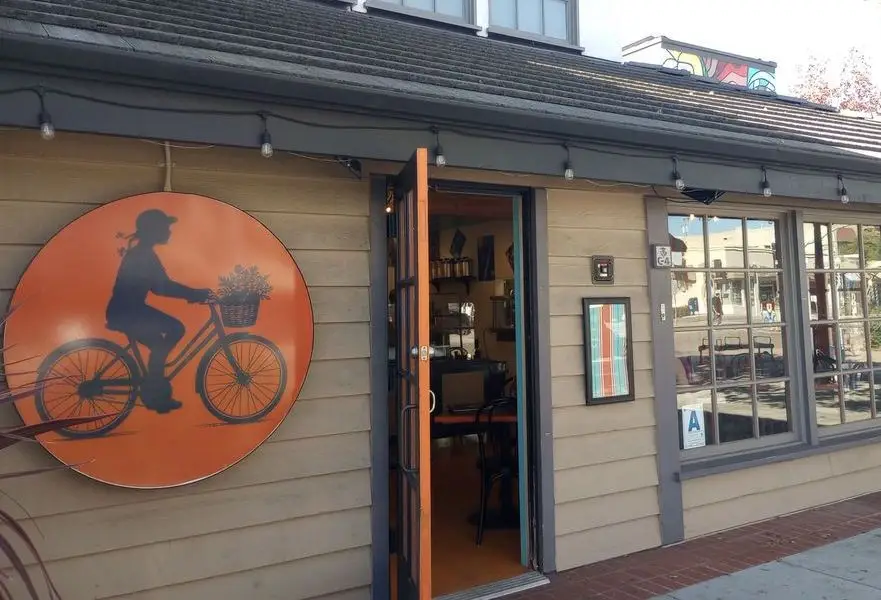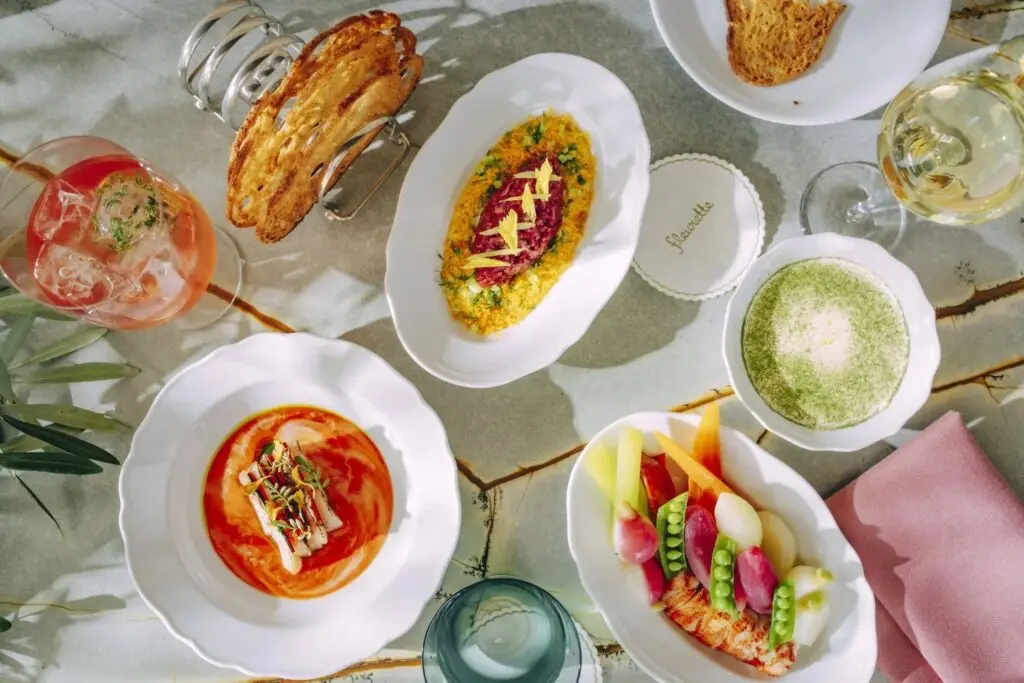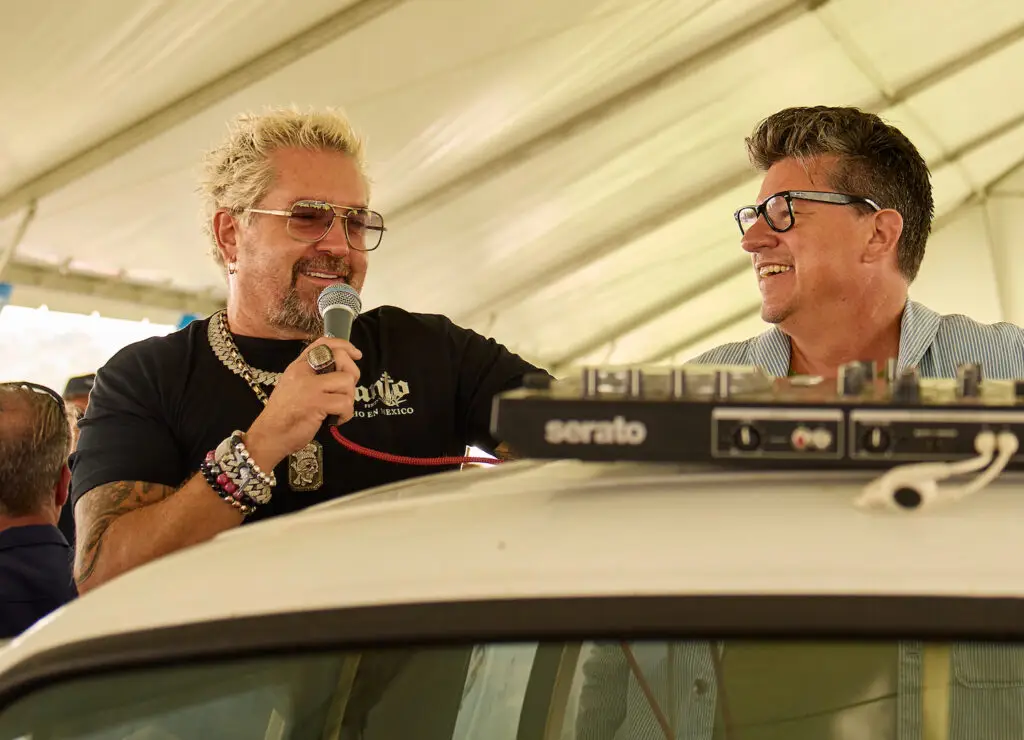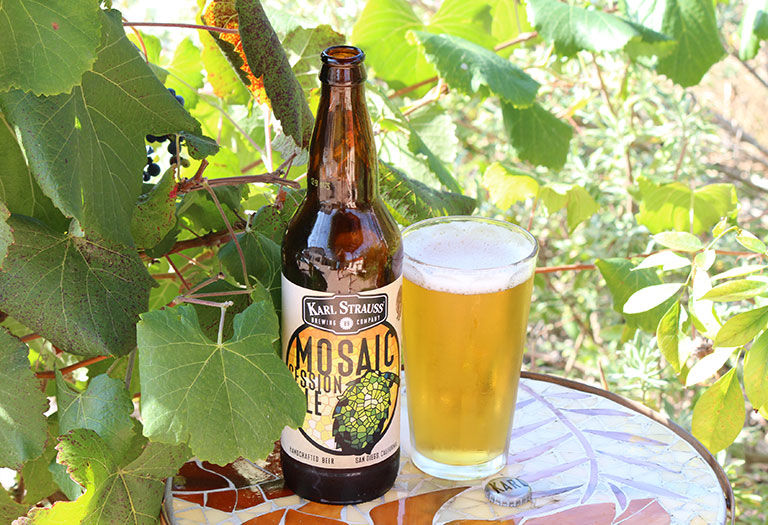The beer started out as an experiment, a chance to play with a new hop variety that had recently become available. At Karl Strauss, that experiment produced a unique beer of exceptional aroma and flavor. From his first sip, Chris Cramer—Karl Strauss co-founder—knew this was a beer they had to make more of—a LOT MORE OF. And so they did. Mosaic became so popular so quickly that the beer’s success took everyone at the brewery a bit by surprise; and that’s when the real challenges began.
The beer’s development began in 2012, when the Hop Breeding Company—a consortium of hop farmers and John I. Haas up in Yakima—developed a new variety called HBC369. They wanted to share the new hop with a select group of brewers and wanted to see how the brewers would use it. Karl Strauss was one of the select few breweries that got to play with HBC369, but only with tiny little bits of it. “Our brewers were immediately intrigued by it,” Chris recalls. “It was so distinctly aromatic. It had such incredible grapefruit, tropical fruit, passion fruit, and peach aromas to it. It was citrusy and crisp, and it was an unusual hop in that you could use it for both aromatics and for bittering.” So, in 2013, the brewers at Karl Strauss gave the growers an order to send as much HBC369 as they could.
Karl Strauss has the somewhat unique advantage of running not only a tasting room at the main production brewery in PB, but also small breweries at each of their brewery-restaurants. The brewers at each of the brewery-restaurants are given the freedom to develop their own recipes and to brew them on the small systems, which creates a lot of variety (that’s how KS winds up brewing more than 80 different beers a year!). Sean Albrecht, who was the brewer at the KS downtown in 2013, decided that he wanted to do something different from what everyone else was doing with HBC369. Most people were using the hop as an ingredient in making super hoppy double IPAs and highly bitter IPAs. Chris Cramer recalls that, “Sean recognized, and very adroitly, that if you use too much of the hop, or don’t use it properly, it starts taking on sort of a funky diesel quality.” Sean wanted to craft a beer that just highlighted the best aspects of this new variety. Instead of doing a big overblown IPA, he wanted to do a session ale that would be in the IPA category but would be low alcohol and would allow drinkers to fully appreciate the delicious flavors and aromas of this hop.
Sean brewed the first full batch of what came to be called Mosaic Session Ale on his 10-barrel system on Columbia Street downtown. “Of course, I think it’s wonderful that Sean did it at that location,” Chris says, “because that’s—of course—the birthplace of San Diego’s craft brewing revolution.” The reaction from Karl Strauss customers (as well as staff) was unanimous. As Chris Cramer puts it: “People went nuts. In twenty-five years of being in this industry, I’ve never seen such a strong customer reaction, off the bat, to anything we’ve brewed.” Chris recalls that, the first time he sat down and tasted what Sean had created, his first reaction was, “YUM! My second reaction was I want more. And my third reaction was, oh crap! There is no more! This is it!”
The first full batch exhausted all the hops they had, but Chris was determined to find a way to get more. The brewery had gotten such buzz from the initial release that Chris went to his partner and co-founder, Matt Rattner, and told him they had “lightning in a bottle.” Chris and Matt decided they would contract for as much Mosaic as they could get in 2014, which was going to be 2,000 pounds. In the world of Mosaic at the time, that was a lot of hops, but for Karl Strauss, it was only a one-month supply. Despite the hop’s scarcity, the decision was made to scale the recipe up and brew it on the 60-barrel system in PB so it could be shared with all the KS brewery-restaurants and some specialty beer bars.
The reaction to the wider release was even bigger than the first. “It blew up,” Chris says. “In that one month, the customer reaction and the media reaction—the press that we started getting on it—was incredible. Most striking, though, was the reaction that we got from other brewers in the community. I had so many brewers come up to me and say, ‘Oh, my god! This is my favorite beer that Karl Strauss has ever made.’” As for the competitions, Chris says Mosaic won medals in every competition it was entered into, including the California State Fair where it won a gold as the best session ale in California.
The gold medals and the accolades were great, but Chris and his team had a unique kind of problem on their hands. They had incredible demand for this great beer, and they couldn’t make enough of it. Now was the time to put those long-term relationships with the hop growers to work. To start, after the growers knew more specifically what their yields were going to be, they doubled the KS allocation for 2014 to 4,000 pounds. Well, that was a two-month supply. For a full-scale year-round production beer, they’d need 20,000 pounds—five times their allocation. Chris decided (for the first time in his 25-year career) that he was going to fly up to Yakima and go on what he called his first-ever “Beg-athon.” He spent days meeting with growers and suppliers. He took them bottle samples and press clippings of all the great reviews—he even lugged along samples of medals. Chris made the case that, if growers wanted to expand the brand, Karl Strauss had a beer that put the name of the hop right out there, front and center. The days of begging paid off. “Apparently I still have some Mojo,” Chris jokes. “And the day I arrived in Denver for the GABF in October, I got a call from John Gorman, head of sales for John I. Haas, who said he went to the president of his company and told him that he’d quit his job if Karl Strauss didn’t get the hops. We got another 20,000 pounds for the coming year.” This, of course, was great news, but it meant the team in PB would have to scramble to get a label designed, to get the graphics together, and to get reps out selling ahead of time to ensure success. On top of it all, Mosaic won a bronze medal in the session category on the final day of GABF 2014, which created even more demand!
Mosaic Session Ale rolled out in a big way as soon as the hops started coming in at the beginning of 2015. It quickly went from being draft-only to being available in 22-ounce bottles and then in 12-ounce six-packs. “Since February, the beer has just skyrocketed in sales,” Chris says. “In fact, it has now overtaken Karl Strauss Amber, which is our original beer, and is our third-best seller. I wouldn’t be surprised if in a couple of years if this was our best-selling beer.” Next month, the brewery will start its first-ever experiment with cans, and guess which beer they are going to start with….
The continued success of Mosaic is, of course, heartily embraced by the Karl Strauss team, but it also involves a kind of tightrope walk. Producing a “showcase” beer that uses only one hop means, as Chris says, “There’s no place to run. A lot of brewers substitute hops and play around with their formulations over time, but we can’t.” This is not a challenge that Chris takes lightly. “I was warned,” he says, “My friends in the hop industry said you don’t want to become beholden to a single hop. And I said, you know what? If there was one hop I ever wanted to marry, and be beholden to, this is the hop.” Lucky for us, Karl Strauss and Mosaic found each other; most beer lovers would agree they now enjoy a marriage made in heaven.
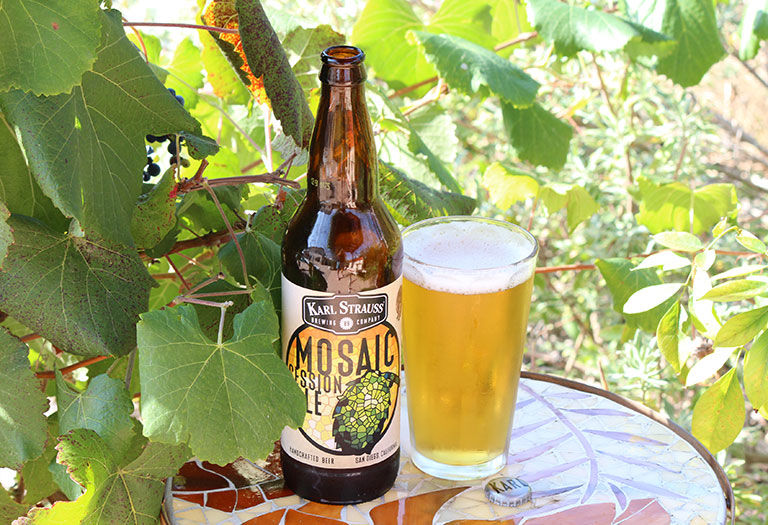
“I Married a Hop”
PARTNER CONTENT
Photo by Bruce Glassman

